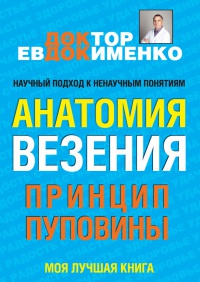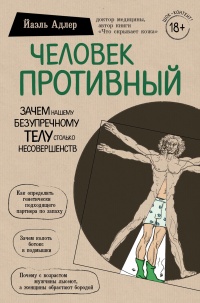Читать книгу "Чувства: Нейробиология сенсорного восприятия - Роб Десалл"
Шрифт:
Интервал:
Закладка:
19. Лицом к лицу с музыкой
Замечание Пинкера о чизкейке есть в его работе: Pinker (1999), – а о «мозговом черве» Сакса читайте в кн.: Sacks (2010). Обзор исследования о том, как нейроны связаны с абсолютным слухом, дан в ст.: Hou et al. (2016), – а генетические предпосылки музыкального слуха описаны в ст.: Seesjarvi et al. (2016). Нейробиология музыки рассматривается в ст.: Chanda and Levitin (2013), – а нейробиология амузии в ст: Peretz (2016). О геномных исследованиях музыкальности написано в работе: Oikkonen et al. (2016), – а также в ст.: Oikkonen and Jarvela (2014); Tan et al. (2014); Gingras et al. (2015). О том, как музыка связана с обществом, читайте в ст.: Bonneville-Roussey et al. (2013); TerBogt et al. (2013); Clark et al. (2015); Pantev et al. (2015); Savage (2015); Shafer et al. (2015); Shafer (2016). Роль музыки для снижения уровня стресса описана в ст.: Thoma et al. (2013), – а эксперимент с Мистером Боллом и связью музыки и эмоций разобран в ст.: Sievers et al. (2013). Статья Патрика Каваны об искусстве и нейробиологии также есть в списке литературы. Подход Рамачандрана к искусству представлен в ст.: Huang (2009). Описание программы Painting Fool вы найдете в кн.: Colton (2012), – а о возможностях программы генерировать галлюциногенное искусство можно прочитать в ст.: Berov and Khunberger (2016).
Leonid Berov and Kai – Uwe Kuhnberger. Visual Hallucination for Computational Creation. In Proceedings of the Seventh International Conference on Computational Creativity (2016). P. 107–114.
Arielle Bonneville-Roussy, Peter J. Rentfrow, Man K. Xu and Jeff Potter. Music through the Ages: Trends in Musical Engagement and Preferences from Adolescence through Middle Adulthood. Journal of Personality and Social Psychology 105, no. 4 (2013). P. 703.
Patrick Cavanagh. The Artist as Neuroscientist. Nature 434, no. 7031 (2005). P. 301–307.
Mona Lisa Chanda and Daniel J. Levitin. The Neurochemistry of Music. Trends in Cognitive Sciences 17, no. 4 (2013). P. 179–193.
Shannon Scott Clark and S. Giac Giacomantonio. Toward Predicting Prosocial Behavior: Music Preference and Empathy Differences between Adolescents and Adults. Empirical Musicology Review 10, no. 1–2 (2015). P. 50–65.
Simon Colton. The Painting Fool: Stories from Building an Automated Painter. In Computers and Creativity. Springer, 2012. Р. 3–38.
Bruno Gingras et al. Defning the Biological Bases of Individual Differences in Musicality. Philosophical Transactions of the Royal Society B: Biological Sciences 370, no. 1664 (2015). P. 20140092.
Jiancheng Hou et al. Neural Correlates of Absolute Pitch: A Review. Musicae Scientia (2016), doi: 10.1177/1029864916662903.
Mengfei Huang. The Neuroscience of Art. Stanford Journal of Neuroscience 2, no. 1 (2009). P. 24–26.
Jaana Oikkonen and Irma Jarvela. Genomics Approaches to Study Musical Aptitude. Bioessays 36, no. 11 (2014). P. 1102–1108.
Jaana Oikkonen, Paivi Onkamo, Irma Jarvela and Chakravarthi Kanduri. Convergent Evidence for the Molecular Basis of Musical Traits. Scientifc Reports 6 (2016). P. 39707.
Christo Pantev et al. Musical Expertise Is Related to Neuroplastic Changes of Multisensory Nature within the Auditory Cortex. European Journal of Neuroscience 41, no. 5 (2015). P. 709–717.
Isabelle Peretz. Neurobiology of Congenital Amusia. Trends in Cognitive Sciences 20, no. 11 (2016). P. 857–867.
Steven Pinker. How the Mind Works. Annals of the New York Academy of Sciences 882, no. 1 (1999). P. 119–127.
Oliver Sacks. Musicophilia: Tales of Music and the Brain. Vintage, 2010.
Patrick E. Savage, Steven Brown, Emi Sakai and Thomas E. Currie. Statistical Universals Reveal the Structures and Functions of Human Music. 2015.
Proceedings of the National Academy of Sciences 112, no. 29. Р. 8987–8992.
Thomas Schafer. The Goals and Effects of Music Listening and Their Relationship to the Strength of Music Preference. PloS One 11, no. 3 (2016). P. e0151634.
Thomas Schafer, Peter Sedlmeier, Christine Stadtler and David Huron. The Psychological Functions of Music Listening. Frontiers in Psychology 4 (2013). P. 511.
Erik Seesjarvi et al. The Nature and Nurture of Melody: A Twin Study of Musical Pitch and Rhythm Perception. Behavior Genetics 46, no. 4 (2016). P. 506–515.
Beau Sievers, Larry Polansky, Michael Casey and Thalia Wheatley. Music and Movement Share a Dynamic Structure That Supports Universal Expressions of Emotion. Proceedings of the National Academy of Sciences 110, no. 1 (2013). P. 70–75.
Yi Ting Tan, Gary E. McPherson, Isabelle Peretz, Samuel F. Berkovic and Sarah J. Wilson. The Genetic Basis of Music Ability. Frontiers in Psychology 5 (2014). P. 658.
Tom F. M. Ter Bogt, Loes Keijsers and Wim H. J. Meeus. Early Adolescent Music Preferences and Minor Delinquency. Pediatrics 131, no. 2 (2013). P. e380–e389.
Myriam V. Thoma et al. The Effect of Music on the Human Stress Response. PloS One 8, no. 8 (2013). P. e70156.
20. Нет пределов
Исследование разницы чтения на компьютерном экране и на бумаге было сделано и описано в ст.: Mangen et al. (2013). Подробности о феномене переноса игры читайте в ст.: Ortiz De Gortari (2016). Влияние на тактильные и сенсорные аспекты восприятия и гомункулярная гибкость в мире виртуальной реальности представлены в ст.: Won et al. (2015). Мы с коллегой обсуждаем взгляды Антонио Дамасио на эмоции в ст.: DeSalle and Tattersall (2012), – а рассуждения о роли языка в формировании когнитивных способностей человека вы найдете в ст.: Tattersall (2016).
Rob DeSalle and Ian Tattersall. The Brain: Big Bangs, Behaviors, and Beliefs. Yale University Press, 2012.
Anne Mangen, Bente R. Walgermo and Kolbjorn Bronnick. Reading Linear Texts on Paper versus Computer Screen: Effects on Reading Comprehension. International Journal of Educational Research 58 (2013). P. 61–68.
Angelica B. Ortiz De Gortari. The Game Transfer Phenomena Framework: Investigating Altered Perceptions, Automatic Mental Processes and Behaviors Induced by Virtual Immersion. Annual Review of Cybertherapy and Telemedicine 14 (2016). P. 9–15.
Ian Tattersall. The Thinking Primate: Establishing a Context for the Emergence of Modern Human Cognition. Proceedings of the American Philosophical Society 160, no. 3 (2016). P. 254–265.
Andrea Stevenson Won, Jeremy Bailenson, Jimmy Lee and Jaron Lanier. Homuncular Flexibility in Virtual Reality. Journal of Computer-Mediated Communication 20, no. 3 (2015). P. 241–259.
Внимание!
Сайт сохраняет куки вашего браузера. Вы сможете в любой момент сделать закладку и продолжить прочтение книги «Чувства: Нейробиология сенсорного восприятия - Роб Десалл», после закрытия браузера.










